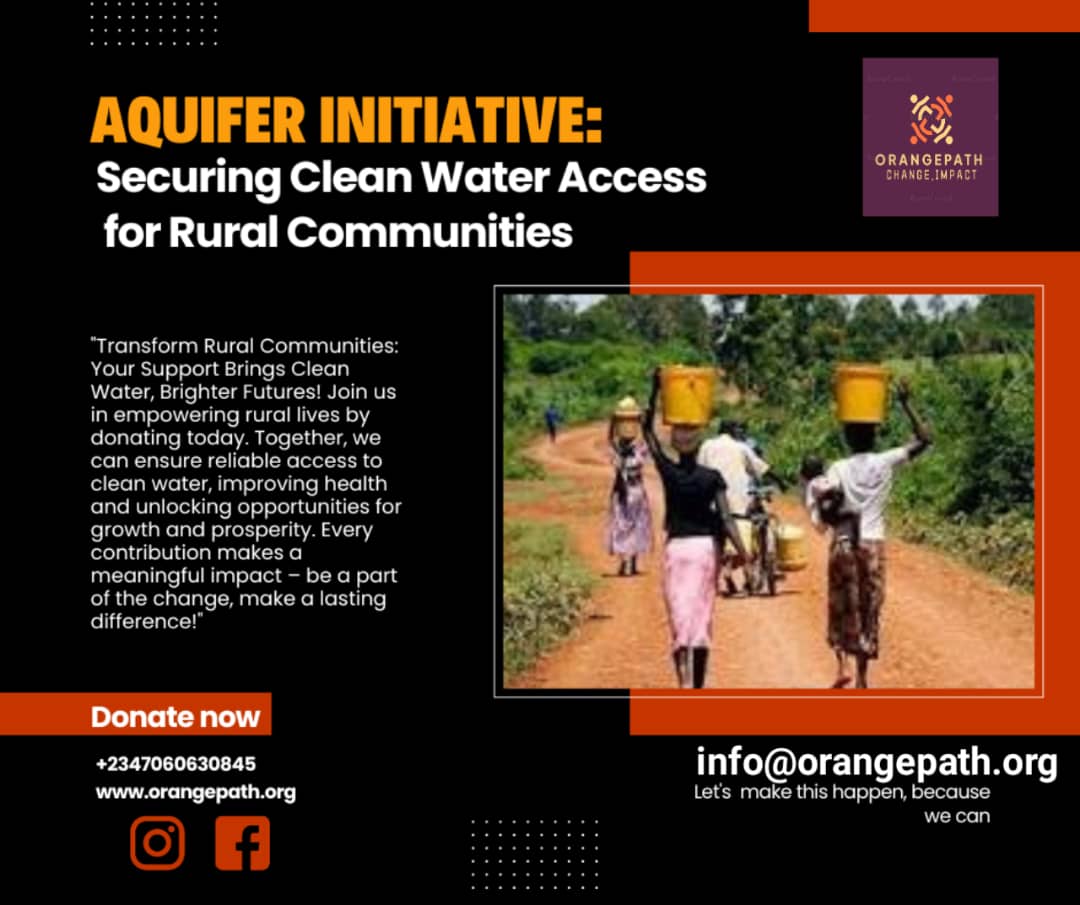The “Aquifer Initiative” is a groundbreaking project by the Orangepath Foundation, dedicated to ensuring access to clean and safe water for rural communities. Through innovative solutions, community engagement, and sustainable practices, we aim to address water scarcity and improve the quality of life for individuals and families in rural areas.
Problem Statement:
Many rural communities around the world lack access to clean and safe water, leading to health risks, economic hardships, and environmental degradation. The “Aquifer Initiative” seeks to tackle this pressing issue by implementing water access solutions that are efficient, sustainable, and tailored to local needs.
Target Audience:
Our initiative targets rural communities, local governments, NGOs, water management agencies, and stakeholders involved in water resource management, with a focus on promoting equitable access to clean water for all residents.
Objectives:
1. Water Infrastructure Development: Implement water infrastructure projects such as boreholes, wells, water purification systems, and distribution networks to provide reliable access to clean water for rural communities.
2. Capacity Building and Training: Provide training, education, and capacity-building programs for community members on water conservation, sanitation practices, water quality monitoring, and sustainable water management.
3. Community Engagement and Empowerment: Engage communities in decision-making processes, empower local water committees, and promote community-led initiatives for water conservation, management, and maintenance.
4. Water Quality Monitoring: Establish water quality monitoring systems, conduct regular testing, and provide information on water safety and health risks to ensure that water sources meet quality standards.
5. Sustainability and Resilience: Promote sustainable water practices, rainwater harvesting, watershed protection, and climate-resilient water management strategies to enhance water security and adapt to changing environmental conditions.
Unique Features:
The “Aquifer Initiative” stands out due to its:
– Community-Centered Approach: Prioritizing community participation, local ownership, and empowerment in all water access and management efforts.
– Innovative Solutions: Implementing cutting-edge technologies, nature-based solutions, and sustainable practices to address water scarcity and quality challenges.
– Partnerships and Collaboration: Collaborating with local stakeholders, governments, NGOs, and experts to leverage resources, expertise, and networks for maximum impact and sustainability.
Implementation Plan:
1. Needs Assessment: Conduct comprehensive assessments and consultations to understand the water access challenges, needs, and priorities of rural communities.
2. Water Infrastructure Projects: Design, fund, and implement water infrastructure projects, including boreholes, wells, water treatment facilities, and distribution systems, tailored to local conditions and demands.
3. Capacity Building and Training: Provide training workshops, educational materials, and skills development programs on water conservation, sanitation, hygiene practices, and sustainable water management.
4. Community Engagement Activities: Organize community meetings, participatory workshops, and awareness campaigns to engage residents in water conservation, monitoring, and governance.
5. Monitoring and Evaluation: Establish monitoring systems, collect data on water usage, quality, and impact, and evaluate project outcomes to inform continuous improvement and sustainability efforts.
Impact Measurement:
– Access to Clean Water: Measure improvements in access to clean and safe water for rural communities, including the number of households served, water quality indicators, and reliability of water sources.
– Community Empowerment: Assess changes in community capacity, knowledge, and participation in water management, conservation, and governance activities.
– Sustainability and Resilience: Evaluate the long-term sustainability, resilience, and environmental impact of water infrastructure projects, conservation efforts, and climate adaptation measures.
Budget Allocation:
– Water Infrastructure Projects: 35%
– Capacity Building and Training: 25%
– Community Engagement and Empowerment: 20%
– Monitoring and Evaluation: 10%
– Sustainability and Resilience Initiatives: 10%



